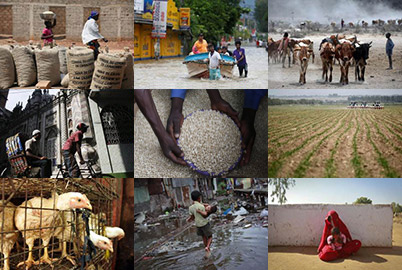- New research finds the Indian Ocean tsunami got more media attention in the first six weeks after it struck than all of the world&${esc.hash}39;s top 10 "forgotten" emergencies combined have received in the past year.
The research, commissioned by AlertNet, also suggests the tsunami squeezed out coverage of other crises.
The research is based on an analysis of stories in more than 200 English-language newspapers from around the world held in the database of Factiva, a Dow Jones and Reuters Company, using techniques honed for competing multinational companies to analyse their success in attracting the media spotlight.
Click here to see the full-size graphThe crises were selected in the "AlertNet top 10 &${esc.hash}39;forgotten&${esc.hash}39; emergencies" -- a poll of more than 100 relief professionals and personalities with an interest in aid who were asked to pick the humanitarian emergencies most worthy of media attention this year.
Democratic Republic of Congo ranked highest, is followed by Uganda, Sudan, HIV/AIDS, West Africa, Colombia, Chechnya, Nepal, Haiti and infectious diseases including malaria and tuberculosis.
News stories on HIV/AIDS and other diseases were only included in the research when they covered outbreaks in developing countries.
Looking at trends over the four months up to the end of February, there is evidence that the volume of media coverage of the "forgotten" emergencies has fallen post-tsunami.
Only one crisis - Nepal - received any marked increase in media attention. Click here to see the full-size graph
In an analysis of which aid organisations are getting most name-checked in the media, U.N.-mandated organisations including the World Health Organisation, World Food Programme and the U.N. Children&${esc.hash}39;s Fund, Unicef, loom large.
But best performer overall is the Red Cross/Red Crescent movement - perhaps reflecting the strength of its network of 181 national societies. And there are strong showings from NGOs like Oxfam, MSF/Doctors Without Borders, Save the Children and World Vision.
The research picked up news stories which mentioned aid organisations within 50 words of the relevant disaster. Variations of each agency&${esc.hash}39;s name were searched for where applicable.
Click here to see the full-size graphThe south Asian press gave more space to the tsunami than other English-language publications, although the British press also scored highly.
In contrast, the U.S. press devoted far less coverage, with the Washington Post coming in at number 23 and the New York Times at number 27.
Click here to see the full-size graphAlertNet will be tracking the trends in the media coverage of humanitarian crises in a series of services to be launched on the alertnet.org website later this year.
Read more about the AlertNet top 10 "forgotten" emergencies:
- Congo war tops AlertNet poll of &${esc.hash}39;forgotten&${esc.hash}39; crises
- FACTSHEET: AlertNet top 10 &${esc.hash}39;forgotten&${esc.hash}39; emergencies
- ANALYSIS: World&${esc.hash}39;s &${esc.hash}39;forgotten&${esc.hash}39; crises scream for attention
- GRAPHIC: AlertNet top 10 &${esc.hash}39;forgotten&${esc.hash}39; emergencies
- AlertNet &${esc.hash}39;forgotten&${esc.hash}39; crisis poll: who said what
- Tsunami coverage dwarfs forgotten crises, says research
- QUIZ: What do you know about forgotten emergencies?
- VIEWPOINT: Media short-sightedness is truly staggering
- FACTSHEET: Poll spotlights grim litany of crises
Our Standards: The Thomson Reuters Trust Principles.

